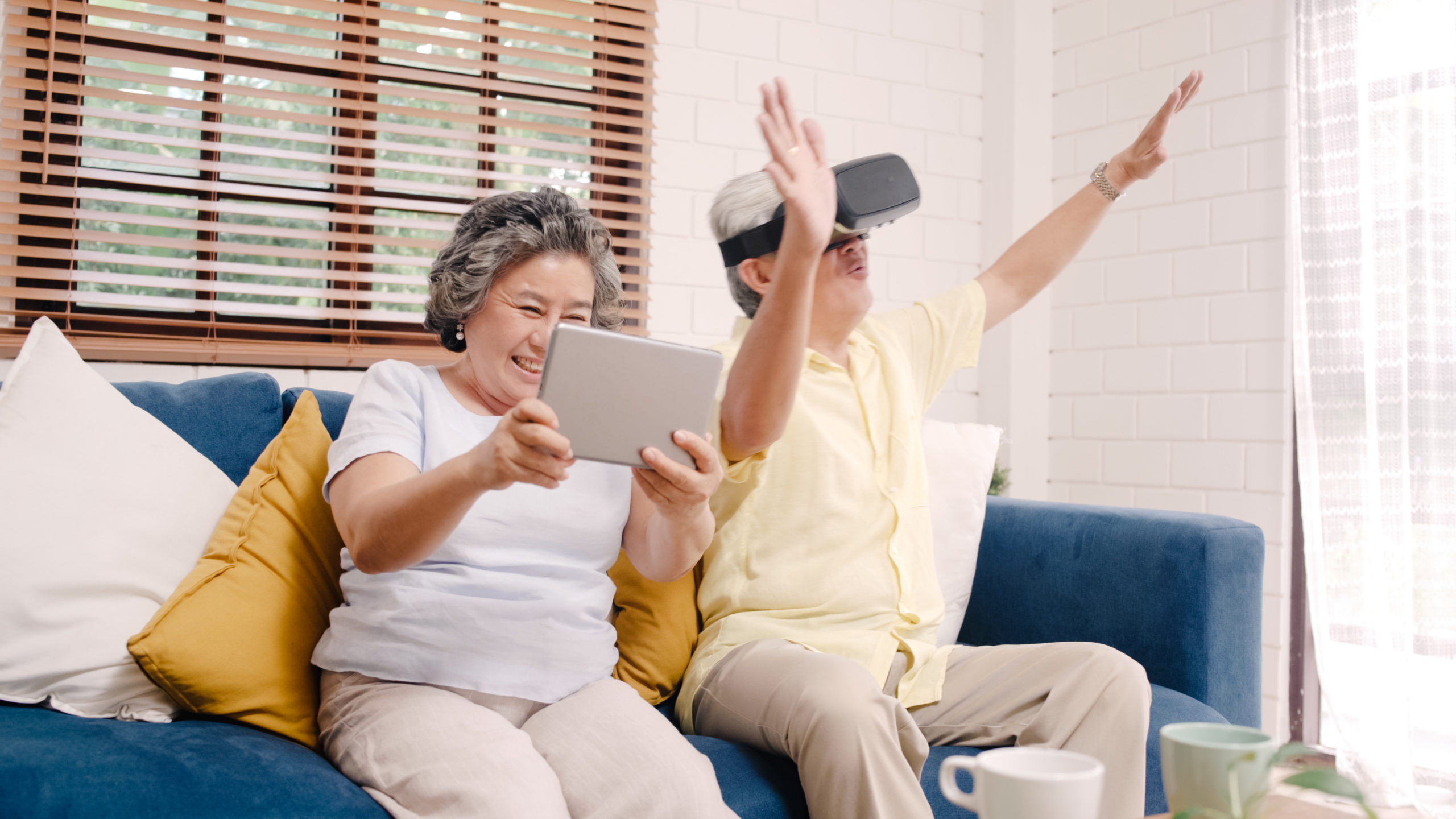You’ve probably heard about Japan’s drive to ensure that you, me and everyone else in the country live long, prosper and become happy centenarians. Technology is being touted as an integral element in that plan. Three key tech themes for preserving, empowering and connecting Japan’s seniors are health, safety and preventing isolation. Let’s see what’s happening in those areas and how Japan’s seniors are using technology for their health and wellbeing in 2019.
The most popular senior technology: Intelligent wearables (including a tail)
Marketers should be avidly following developments in smart fabrics and wearable devices designed to keep Japan’s fragile silver citizens healthier and safer.
Smart clothing—particularly garments made of fabric with integrated IoT sensors—has vast potential for tracking vital signs to safeguard health and wellbeing. Xenoma’s wearable “e-skin,” for example, assesses skin temperature, respiration, motion and posture, both while the wearer is awake and asleep, and uses dedicated software to crunch the data. Toray and NTT’s hitoe brand and smart fabric firm Mitsufuji’s AGPoss and hamon brands offer smartwear with similar conductive materials that serve as both fiber and sensor, and transmits real-time data to smart devices, computers or the cloud.
From wearable tech to clip-ons that can prevent accidents
Incorporating this subtle tech in all kinds of apparel is ideal for preventive medicine, especially vital for spotting symptoms of an imminent stroke or heart attack.
As muscles and senses deteriorate, balance becomes a trickier proposition. Attach a GoLiveClip from Gociety Solutions on a collar, belt or button, however, and the unobtrusive wearable will notify caregivers immediately if the person falls. GoLiveClip even has a predictive function that assesses walking patterns and sends out an alert if a fall seems likely.
If Keio University’s Arque device catches on, we may even see seniors sporting robotic tails. Based on a seahorse’s tail, the Arque is an articulated appendage that helps the wearer balance using pneumatics, particularly when carrying objects.
Japan’s seniors are checking off travel bucket list items without the hassle
Whether it’s to explore unknown places or visit spots they cherish, Japan’s seniors are finding that virtual travel is an enticing option. University of Tokyo therapist Kento Toshima, for example, is encouraging still-active silver travelers to use 360-degree VR cameras to capture their journeys and then share them with other seniors who remain adventurous at heart but are not up to the physical hardships of real-life journeys.
According to Toshima, the visual stimuli and virtual interaction can also motivate sedentary watchers to stand up and move around. Related to this, a company called Tribemix staves off dementia with training and cognitive stimulation, while another called Rendever has a platform and VR headsets specifically designed for senior citizens to stave off social isolation through virtual shared experiences. This could be a major outlet for travel-related content producers—safaris, museum tours and more—and a way to fend off dementia and depression.
Using tech to help users bond, stay in touch and entertained
A previous post talked about how cute, animated robots get a heartfelt reception as companions in Japan. As effective as those chirpy, cuddly friends can be at helping seniors stave off loneliness and despair, human interaction is still the gold standard.
That’s why social networking services such as seniorcom.jp and Shumito Club exist. Both sites appeal to people with special interests. Sumito Club offers blogging, messaging, photo albums, and communities (from pets to food to art to things digital and much more), and even supports the creation of events. On seniorcom.jp, members can get info on fashion and beauty, lifestyle, and special interests. If you’re marketing products and services to silvers, you should be trawling for insights here and getting the word out as well.
Seniors don’t do tech? Think again!
It’s a mistake to believe that Japan’s seniors can’t handle IT, by the way. They’ll bite as long as it’s relevant to their situation and geared for their needs. Masako Wakamiya, an octogenarian programmer who develops apps for the silver consumer and teaches elders how to use and enjoy PCs and smart devices, points out that older people have more difficulty moving their fingers and have drier hands. That makes swiping gestures and operations involving speed problematic.
While silver consumers themselves are obvious marketing targets, there’s a peace of mind aspect for adult children of aging parents that you shouldn’t forget. Any marketing campaign has to sweep them in as well. Since Japan is a prime proving ground for products and services designed for aging consumers—and a country of famously picky buyers—you should get good traction elsewhere if you’re successful in Japan.

